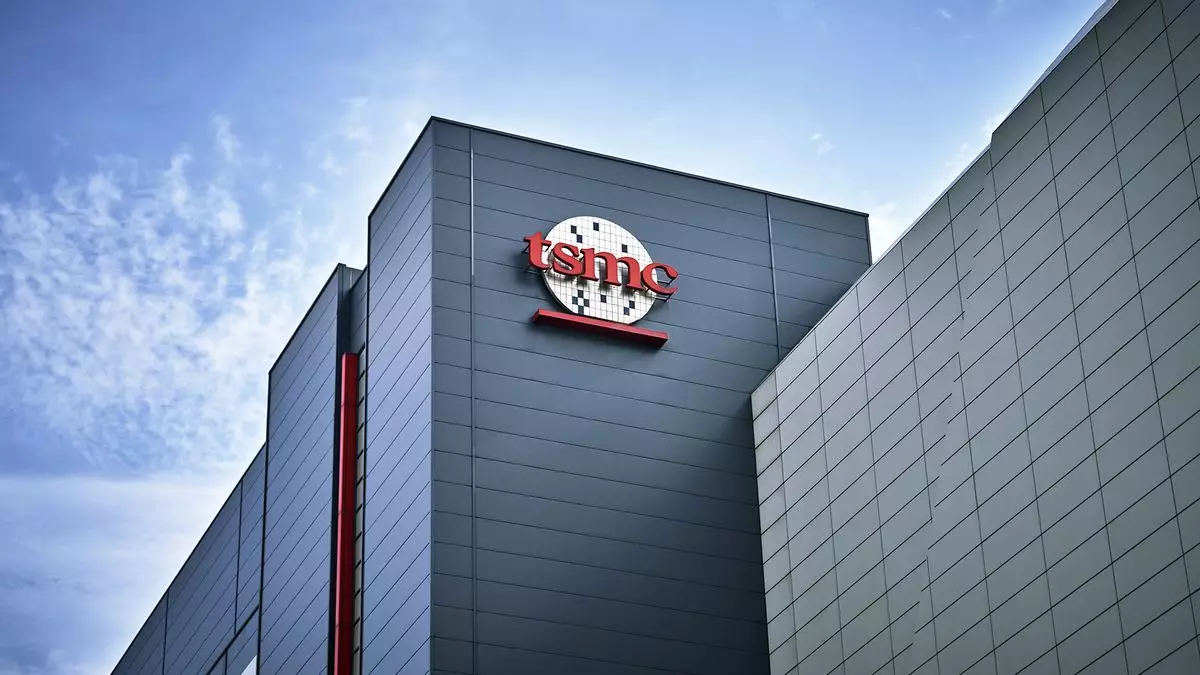In the intricate world of global technology, few companies are as pivotal as Taiwan Semiconductor Manufacturing Company (TSMC), the largest chip manufacturer globally. With the recent news that TSMC may face a fine exceeding $1 billion due to U.S. export regulations related to Huawei, the semiconductor behemoth finds itself at a critical juncture. The stakes are high—while $1 billion might seem like pocket change for a titan like TSMC, the implications of such penalties ripple across international trade relationships and geopolitics.
The escalation of regulatory scrutiny arises from TSMC’s apparent interactions with Huawei, a company already subjected to stringent trade restrictions by the U.S. government. The details of the allegations reveal a potential breach of export rules, as TSMC uncovered that a Huawei product—a formidable AI processor dubbed the Ascend 910B—contained components manufactured by them. This revelation not only spotlights TSMC’s operational transparency but also positions it at the intersection of technology and diplomacy.
The Role of the U.S. Government in Tech Oversight
The increasing vigilance from the U.S. Department of Commerce is not merely administrative but reflects a broader strategy to limit China’s access to advanced technologies that could enhance its military capacities. The placement of the computing design company Sophgo on the Entity List further underscores the seriousness with which the U.S. administration regards any indirect assistance to Huawei. By hindering exports not just to Huawei but to companies that interact with them, the U.S. hopes to maintain a competitive edge against China’s burgeoning tech landscape.
While it may be tempting to view TSMC as a mere casualty of geopolitical tensions, it’s essential to recognize the broader implications of such decisions. The delicate balance of fostering innovation while adhering to national security considerations creates a challenging environment for any technology entity. TSMC’s Nina Kao has stated that the company ceased transactions with Huawei in 2020, indicating both an awareness of the changing landscape and a strategy to minimize risk.
The Potential Consequences of Non-Compliance
TSMC’s predicament raises critical questions about compliance in an environment dictated by swiftly evolving regulations. The potential for a fine exceeding $1 billion emerges as a stark reminder of the legal accountability that giants in the semiconductor industry must navigate. The U.S. export control regulations allow for considerable fines, potentially amounting to twice the value of the affected transactions, heightening the stakes for TSMC as it faces potential repercussions.
Moreover, TSMC’s past relationships with Huawei and other entities raise concerns about the effectiveness of an immediate compliance strategy. Even if TSMC was not aware of specific actions taken by intermediaries like Sophgo, the fallout is real. Companies are now scrutinized not only for their compliance but also for their supply chain integrity. If the allegations press forward, TSMC may need to engage in a lengthy legal battle or negotiate a settlement, complicating its business strategy moving forward.
Investments Amidst Uncertainty
Adding layers to this situation is TSMC’s recent announcement of a $100 billion investment in the United States. This monumental commitment affirms TSMC’s aspirations to expand its footprint internationally and fortify its role as a leader in chip manufacturing. However, the looming possibility of sanctions or penalties raises the question: Can TSMC genuinely separate its operational growth from geopolitical risks?
TSMC’s investment strategy faces the dual burden of navigating U.S. relations while simultaneously addressing the ephemeral trust of stakeholders in a world where every decision can have far-reaching consequences. Companies are now faced with the challenge of re-evaluating their compliance measures while still striving for innovation and growth.
The ongoing saga of TSMC and its potential liabilities highlights the broader context of global supply chains intertwined with political maneuvering. As tech companies engage in a tightly woven dance of diplomatic relations while also pushing the envelope of innovation, their journey forward will undoubtedly be influenced by the evolving landscape of export regulations and international tensions.

